
Arrhythmias can be detected by seeing ECG waveforms.
- Subject:
- Life Science
- Material Type:
- Lecture
- Date Added:
- 06/24/2016

Arrhythmias can be detected by seeing ECG waveforms.
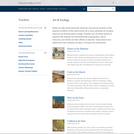
Artists are often particularly keen observers and precise recorders of the physical conditions of the natural world. As a result, paintings can be good resources for learning about ecology. Teachers can use this lesson to examine with students the interrelationship of geography, natural resources, and climate and their effects on daily life. It also addresses the roles students can take in caring for the environment. Students will look at paintings that represent cool temperate, warm temperate, and tropical climates.
In this lesson students will: Identify natural resources found in particular geographic areas; Discuss ways in which climate, natural resources, and geography affect daily life; Apply critical-thinking skills to consider the various choices artists have made in their representations of the natural world; Make personal connections to the theme by discussing ways they can be environmental stewards; Identify natural resources found in particular geographic areas; Discuss ways in which climate, natural resources, and geography affect daily life; Apply critical-thinking skills to consider the various choices artists have made in their representations of the natural world; Make personal connections to the theme by discussing ways they can be environmental stewards.

This resource is a video abstract of a research paper created by Research Square on behalf of its authors. It provides a synopsis that's easy to understand, and can be used to introduce the topics it covers to students, researchers, and the general public. The video's transcript is also provided in full, with a portion provided below for preview:
"The tick-borne parasite Theileria annulata can cause life-threatening illness in cows. Buparvaquone is the only available drug treatment, but the incidence of buparvaquone (BPQ) resistance is increasing so alternative therapies are needed. To help, researchers recently tested the efficacy of the anti-malaria drug artemisinin and its derivatives against T. annulata infection. Artemisinin itself wasn’t effective, but all of its derivatives were able to selectively kill parasite-infected cells. Artesunate (ARS) and dihydroartemisinin (DHART) were especially potent and either drug could act synergistically with BPQ, enhancing the parasite-killing effects of the individual compounds. Investigation of the mechanism revealed that ARS and DHART caused oxidative stress and DNA damage in the infected cells which activated the protein p53 and the caspase-dependent cell death pathway..."
The rest of the transcript, along with a link to the research itself, is available on the resource itself.
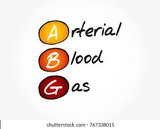
Arterial blood gases, basic overview.
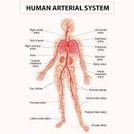
Basic anatomy of the arteries of the human body.
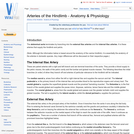
Although the information on this page is based around the anatomy of the canine hindlimb, it is essentially the anatomy of the arteries in domestic species. Any major differences will be discussed on their respective pages

This resource is a video abstract of a research paper created by Research Square on behalf of its authors. It provides a synopsis that's easy to understand, and can be used to introduce the topics it covers to students, researchers, and the general public. The video's transcript is also provided in full, with a portion provided below for preview:
"Colorectal cancer (CRC) is one of the most common gastrointestinal malignancies, and 40% of cases are related to mutation of the oncogene KRAS. However, no KRAS-targeting drugs are currently available for cancer treatment, and patients with KRAS mutations are insensitive to anti-EGFR therapy, which is often used for CRC. To improve treatment options, a new study tested the combined effects of the drugs artesunate and WNT974 on KRAS-mutant CRC. In vitro, the combination synergistically reduced CRC growth and decreased KRAS protein levels and activity, while inducing KRAS degradation via the ubiquitin–proteasome pathway, thereby reducing the oncogene’s influence. Specifically, the induced KRAS degradation was mediated by upregulation of ANAPC2, as well as upregulation of β-TrCP and GSK-3β. In addition, the combination treatment suppressed the PI3K/Akt/mTOR pathway, which is downstream of KRAS and supports tumor growth..."
The rest of the transcript, along with a link to the research itself, is available on the resource itself.
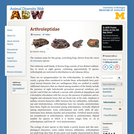
Arthroleptidae: Information
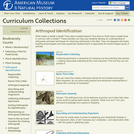
After researching the characteristics of arthropods, students observe arthropods in the field, analyze their data, and learn how to develop their own arthropod collection. The unit is designed to be completed in eight or more sessions. The comprehensive curriculum materials contain information for teachers, including activity tips and an overview of the characteristics that define arthropods.
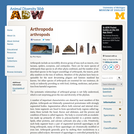
Arthropoda: Information

This unit, in which students prepare to observe arthropods in their field site's different microhabitats, helps set the stage for a discussion on the ramifications of habitat loss. It's designed to be completed in four or more sessions and has comprehensive curriculum materials for teachers, including activity tips and an overview of the microhabitats in a temperate forest. The unit is designed to answer the following two target questions. What microhabitats exist at our site? Do different arthropods occur in different microhabitats?
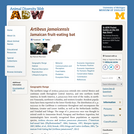
Artibeus jamaicensis: Information

Students are given a choice of sources from which to choose an article relevant to the course (Sustainability Science) for review, including connection to other course content. Integration of article content with other course materials is an important component.
(Note: this resource was added to OER Commons as part of a batch upload of over 2,200 records. If you notice an issue with the quality of the metadata, please let us know by using the 'report' button and we will flag it for consideration.)

How humans have shaped plants and animals through artificial selection and domestication.
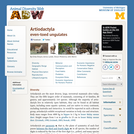
Artiodactyla: Information
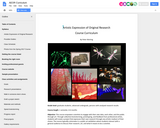
Grade level: graduate students, advanced undergrads, persons with analyzed research results
Course length: 1 semester, 4-6 months
Objective: This course empowers scientists to engage with their own data, each other, and the public through art. Through collective brainstorming, prototyping, and feedback from professional artists, students will create a project that expresses their own research through any artistic medium of their choice. The course typically culminates in a public art exhibition where students interact with a general audience to discuss their research, art, and what it means to be a scientist.
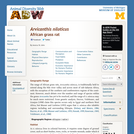
Arvicanthis niloticus: Information
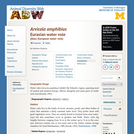
Arvicola terrestris: Information

This article and slide show from the New York Times, features several scientists from the University of Alaska, Fairbanks, who study the effects of thawing permafrost in Alaska.

This video segment explores the benefits and pitfalls of cloning as a means of reproduction. From Evolution: "Why Sex?"